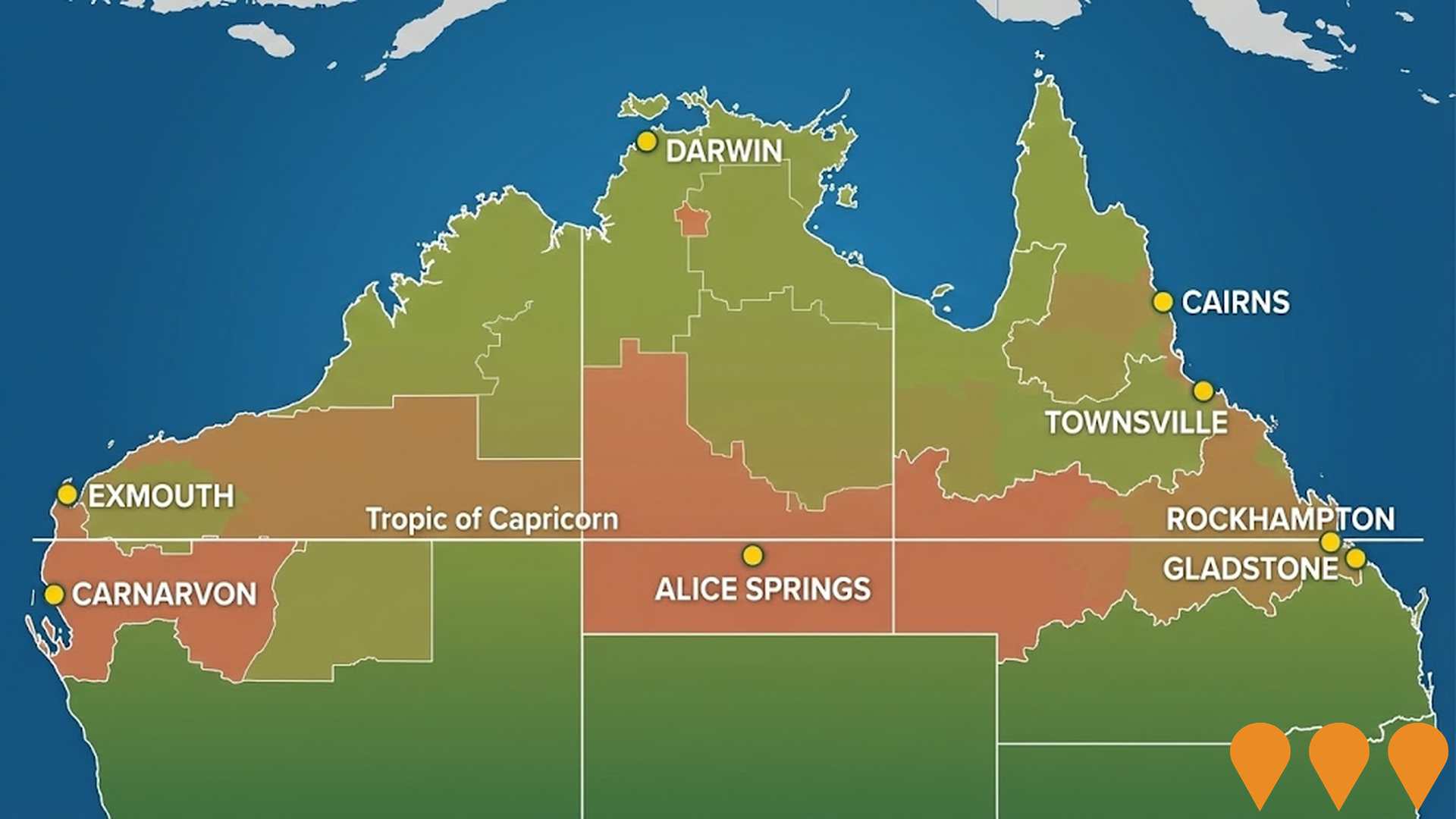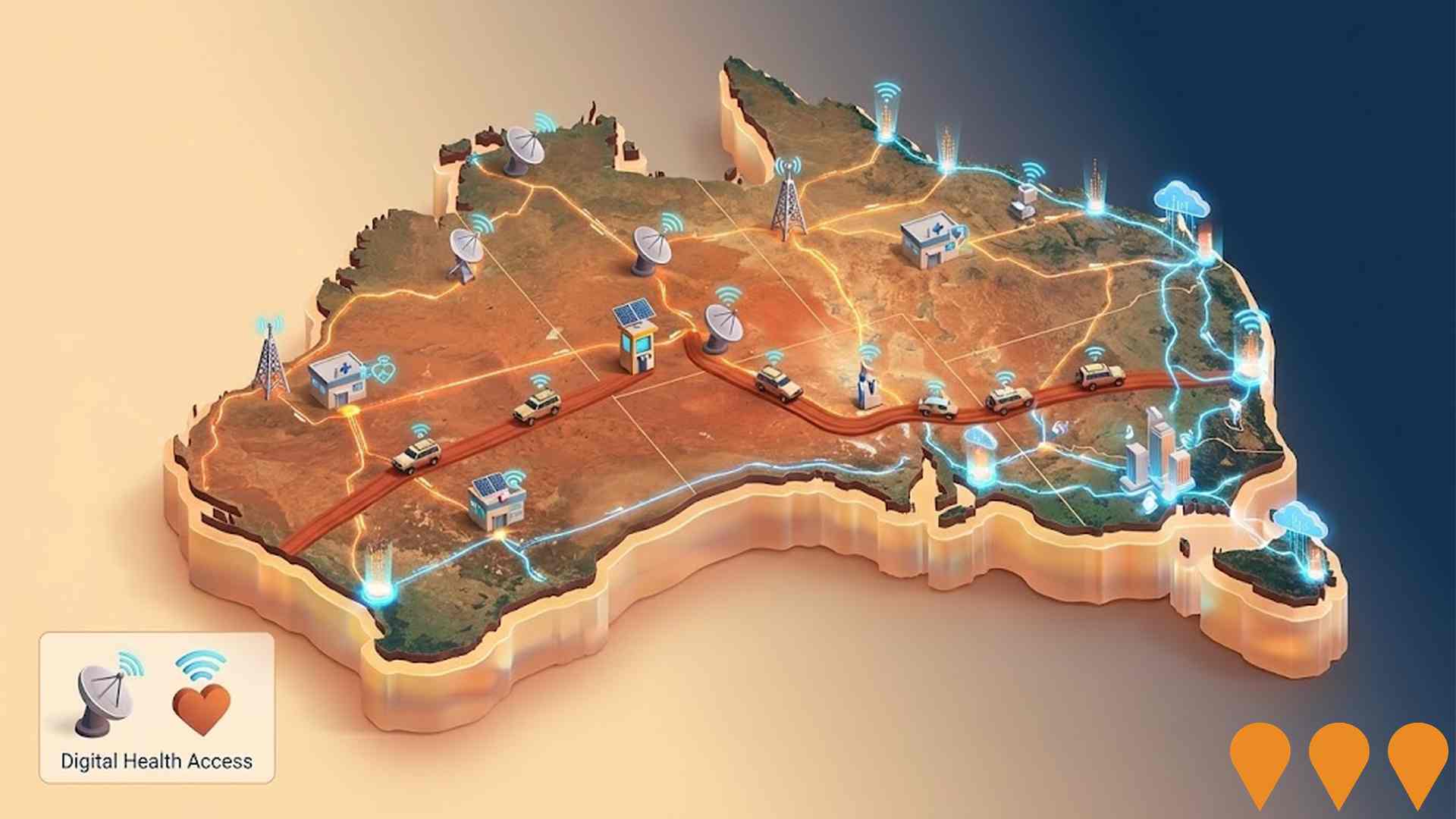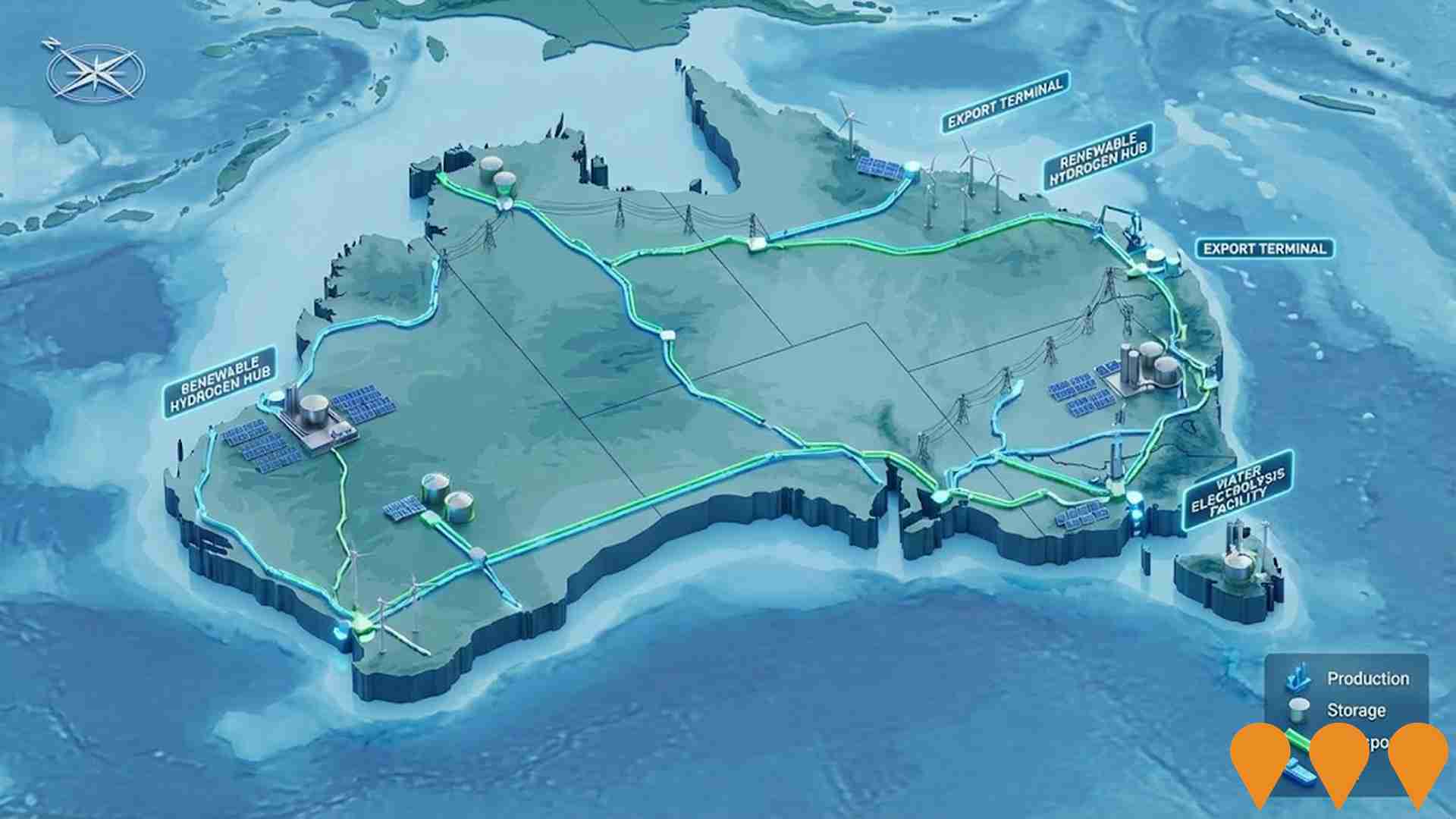Chart Color Schemes
est. as @ -- *
ABS ERP | -- people | --
2021 Census | -- people
Sales Activity
Curious about local property values? Filter the chart to assess the volume and appreciation (including resales) trends and regional comparisons, or scroll to the map below view this information at an individual property level.
Find a Recent Sale
Sales Detail
Population
An assessment of population growth drivers in Tanami reveals an overall ranking slightly below national averages considering recent, and medium term trends
Tanami's population is around 3,432 as of Aug 2025. This reflects an increase of 593 people since the 2021 Census, which reported a population of 2,839 people. The change is inferred from the estimated resident population of 3,382 from the ABS as of June 2024 and an additional 18 validated new addresses since the Census date. This level of population equates to a density ratio of 0 persons per square kilometer. Tanami's growth rate of 20.9% since the 2021 census exceeded the national average (8.6%). Population growth was primarily driven by natural growth, contributing approximately 80.0% of overall population gains during recent periods.
AreaSearch is adopting ABS/Geoscience Australia projections for each SA2 area, as released in 2024 with 2022 as the base year. For areas not covered by this data and post-2032 estimations, AreaSearch applies growth rates by age cohort to each area, based on ABS Greater Capital Region projections released in 2023 using 2022 data. Future population trends project an above median growth for Australian non-metropolitan areas, with the region expected to increase by 470 persons to 2041 based on latest numbers, representing a total increase of 12.2% over the 17 years.
Frequently Asked Questions - Population
Development
Residential development activity is lower than average in Tanami according to AreaSearch's national comparison of local real estate markets
Tanami has had minimal residential development activity, with an average of three dwelling approvals per year over the five years from 2016 to 2020 inclusive. This equates to a total of 19 approvals during this period. The low levels of development reflect Tanami's rural nature, where housing needs are typically driven by local demand rather than broader market forces.
It is important to note that with such low approval numbers, yearly growth figures and relativities can vary considerably based on individual projects. Tanami has substantially lower development levels compared to the Rest of NT. This activity level also falls below national patterns. New building activity in Tanami consists of 75.0% standalone homes and 25.0% medium and high-density housing, with a focus on family homes suited for those seeking rural lifestyle and space. This represents a significant change from the current housing mix, which is currently at 93.0% houses.
This shift reflects reduced availability of development sites and addresses shifting lifestyle demands and affordability requirements. The estimated population count per dwelling approval in Tanami is 2526 people, reflecting its quiet, low activity development environment. Future projections indicate that Tanami is expected to add 420 residents by the year 2041. Should current construction levels persist, housing supply may lag behind population growth, potentially intensifying buyer competition and underpinning price growth.
Frequently Asked Questions - Development
Infrastructure
Tanami has limited levels of nearby infrastructure activity, ranking in the 1stth percentile nationally
Changes to local infrastructure significantly impact an area's performance. AreaSearch has identified 13 projects likely affecting the region. Notable initiatives include Better and Safer Future for Central Australia, Network Optimisation Program - Rail, Tanami Road Upgrade, and Coastal Hazards Adaptation Strategy. The following list details those most relevant.
Professional plan users can use the search below to filter and access additional projects.
INFRASTRUCTURE SEARCH
 Denotes AI-based impression for illustrative purposes only, not to be taken as definitive under any circumstances. Please follow links and conduct other investigations from the project's source for actual imagery. Developers and project owners wishing us to use original imagery please Contact Us and we will do so.
Denotes AI-based impression for illustrative purposes only, not to be taken as definitive under any circumstances. Please follow links and conduct other investigations from the project's source for actual imagery. Developers and project owners wishing us to use original imagery please Contact Us and we will do so.
Frequently Asked Questions - Infrastructure
Better and Safer Future for Central Australia
AUD 250 million Australian Government program delivering new and upgraded housing (approximately 77 new dwellings), Remote Training Hubs, community infrastructure upgrades, and family safety initiatives across multiple remote Central Australia communities.

Enabling Digital Health Services for Regional and Remote Australia
National initiative to expand and improve digital health access for people in regional and remote Australia. Focus areas include enabling telehealth and virtual care, upgrading clinical systems and connectivity, supporting secure information exchange, and building workforce capability in digital health, aligned with the Australian Government's Digital Health Blueprint and Action Plan 2023-2033.

Enabling Infrastructure for Hydrogen Production
Australia has completed the National Hydrogen Infrastructure Assessment (NHIA) to 2050 and refreshed its National Hydrogen Strategy (2024). The programmatic focus has shifted to planning and enabling infrastructure through measures such as ARENA's Hydrogen Headstart and the Hydrogen Production Tax Incentive (from April 2025). Round 2 of Hydrogen Headstart consultation occurred in 2025. Collectively these actions aim to coordinate investment in transport, storage, water and electricity inputs linked to Renewable Energy Zones and priority hubs, supporting large-scale renewable hydrogen production and future export supply chains.

National EV Charging Network (Highway Fast Charging)
Partnership between the Australian Government and NRMA to deliver a backbone EV fast charging network on national highways. Program funds and co-funds 117 DC fast charging sites at roughly 150 km intervals to connect all capital cities and regional routes, reducing range anxiety and supporting EV uptake.

Bulk Water Supply Security
Nationwide program led by the National Water Grid Authority to improve bulk water security and reliability for non-potable and productive uses. Activities include strategic planning, science and business cases, and funding of state and territory projects such as storages, pipelines, dam upgrades, recycled water and efficiency upgrades to build drought resilience and support regional communities, industry and the environment.

Network Optimisation Program - Roads
A national program concept focused on improving congestion and reliability on urban road networks by using low-cost operational measures and technology (e.g., signal timing, intersection treatments, incident management) to optimise existing capacity across major city corridors.

Network Optimisation Program - Rail
A proposal to address urban and regional rail network capacity constraints in Australia through data and technology, aiming to improve efficiency and delay the need for larger-scale investments.

Tanami Road Upgrade
The Tanami Road between Alice Springs and Halls Creek is being upgraded and sealed by Federal, Northern Territory, and Western Australian Governments, covering about 463 kilometres through the Roads of Strategic Importance program.

Employment
Employment conditions in Tanami face significant challenges, ranking among the bottom 10% of areas assessed nationally
Tanami has a diverse workforce with both white and blue-collar jobs, prominent essential services sectors, and an unemployment rate of 13.9% as of June 2025. There are 972 residents employed while the unemployment rate is 8.0% higher than the Rest of NT's rate of 5.9%.
Workforce participation in Tanami is significantly lower at 31.9%, compared to the Rest of NT's 50.7%. Key industries include public administration & safety, health care & social assistance, and education & training. Employment specialization is particularly high in public administration & safety, with a share 1.6 times the regional level. However, accommodation & food services have limited presence at 1.2%, compared to the regional average of 6.9%.
Many residents commute elsewhere for work, as indicated by Census data on working population versus local population. Over the year to June 2025, labour force levels decreased by 1.8% and employment declined by 1.3%, reducing the unemployment rate by 0.4 percentage points. National employment forecasts from Jobs and Skills Australia, released in May 2025, project national growth of 6.6% over five years and 13.7% over ten years. Applying these projections to Tanami's employment mix suggests local growth of approximately 5.8% over five years and 12.7% over ten years, although these are simple extrapolations for illustrative purposes only.
Frequently Asked Questions - Employment
Income
Income metrics place the area in the bottom 10% of locations nationally according to AreaSearch analysis
Tanami's median taxpayer income was $36,655 and average was $46,783 in financial year 2022, according to postcode level ATO data aggregated by AreaSearch. This is lower than the national average, contrasting with Rest of NT's median income of $51,655 and average income of $61,577. By September 2025, estimates suggest median income would be approximately $41,057 and average income $52,402, based on Wage Price Index growth of 12.01% since financial year 2022. Census 2021 data shows household income ranks at the 19th percentile ($1,277 weekly) and personal income at the 0th percentile. Income distribution indicates 33.0% of the population (1,132 individuals) fall within the $1,500 - $2,999 range. Housing costs are fully retained, but disposable income is below average at the 37th percentile.
Frequently Asked Questions - Income
Housing
Tanami is characterized by a predominantly suburban housing profile, with a higher proportion of rental properties than the broader region
Tanami's dwelling structure, as per the latest Census, consisted of 92.7% houses and 7.3% other dwellings (semi-detached, apartments, 'other' dwellings). This compares to Non-Metro NT's 67.8% houses and 32.2% other dwellings. Home ownership in Tanami was at 1.5%, with the rest being mortgaged (0%) or rented (98.5%). The median monthly mortgage repayment was $0, below Non-Metro NT's average of $1,863. Median weekly rent in Tanami was recorded at $0, compared to Non-Metro NT's $280 and the national figure of $375.
Frequently Asked Questions - Housing
Household Composition
Tanami features high concentrations of family households, with a higher-than-average median household size
Family households make up 77.3% of all households, including 38.7% couples with children, 15.2% couples without children, and 19.9% single parent families. Non-family households account for 22.7%, with lone person households at 20.8% and group households comprising 1.3%. The median household size is 4.2 people, which is larger than the Rest of NT average of 2.8.
Frequently Asked Questions - Households
Local Schools & Education
Tanami faces educational challenges, with performance metrics placing it in the bottom quartile of areas assessed nationally
The area's university qualification rate is 10.2%, significantly lower than Australia's average of 30.4%. Bachelor degrees are the most common at 6.0%, followed by postgraduate qualifications (2.5%) and graduate diplomas (1.7%). Vocational pathways account for 19.3% of qualifications among those aged 15+, with advanced diplomas at 2.7% and certificates at 16.6%. Educational participation is high, with 29.7% of residents currently enrolled in formal education: 17.2% in primary, 7.5% in secondary, and 1.2% in tertiary education.
There are 10 schools operating within Tanami, educating approximately 432 students. The educational mix includes 1 secondary school and 9 K-12 schools.
Frequently Asked Questions - Education
Schools Detail
Nearby Services & Amenities
Transport
No public transport data available for this catchment area.
Frequently Asked Questions - Transport
Transport Stops Detail
Health
Tanami's residents boast exceedingly positive health performance metrics with very low prevalence of common health conditions across all age groups
Tanami's health outcomes show exceptional results with very low prevalence of common health conditions across all age groups. The rate of private health cover is extremely low at approximately 46% (1,578 people) compared to 53.7% in the rest of NT and a national average of 55.3%. Diabetes and heart disease are the most common medical conditions, affecting 10.7% and 3.8% of residents respectively, while 79.9% report no medical ailments compared to 76.9% in the rest of NT.
Only 5.4% (186 people) of residents are aged 65 and over, lower than the 9.3% in the rest of NT. Despite this, health outcomes among seniors require particular attention.
Frequently Asked Questions - Health
Cultural Diversity
The level of cultural diversity witnessed in Tanami was found to be above average when compared nationally for a number of language and cultural background related metrics
Tanami's cultural diversity is above average with 3.4% of its population born overseas and 88.7% speaking a language other than English at home. Christianity is the main religion in Tanami, making up 82.7%, compared to 52.6% across the Rest of NT. The top three ancestry groups are Australian Aboriginal (84.2%), English (4.2%), and Australian (3.8%).
These figures differ from regional averages: Australian Aboriginal is substantially higher (84.2% vs 28.9%), while English and Australian are notably lower (4.2% vs 17.4%, and 3.8% vs 17.0% respectively). Notably, Sri Lankan ethnicity is overrepresented in Tanami at 0.4% compared to the regional average of 0.2%.
Frequently Asked Questions - Diversity
Age
Tanami hosts a very young demographic, ranking in the bottom 10% of areas nationwide
Tanami's median age in 2021 was 29 years, lower than the Rest of NT figure of 31 and significantly lower than Australia's 38 years. The age profile showed that those aged 15-24 were particularly prominent at 16.6%, while the 65-74 group was smaller at 3.8% compared to the Rest of NT. Post-2021 Census data indicated that the 35-44 age group had grown from 14.1% to 15.5% of the population, while the 5-14 cohort had declined from 16.8% to 15.6%. By 2041, Tanami's age composition is expected to see notable shifts. The 45-54 age cohort is projected to grow by 108 people (26%) from 416 to 525, while the 5-14 cohort is projected to decline by 12 people.



